Five Colors Indicate Disease
The five colors indicate disease:
When the skin presents abnormal colors such as blue, red, white, black, etc., the body often undergoes corresponding pathological changes. Generally speaking, different colors often represent different organs in the body undergoing various pathological changes.
1. Red: Indicates heat syndromes (excess heat, deficiency heat), and Yang rising syndrome (false heat).
Redness indicates heat syndromes, which can also be seen in Yang rising syndrome. A flushed face indicates internal excess heat; a flushed face with liver Yang hyperactivity and Qi fire rising; a flushed complexion on the cheeks indicates Yin deficiency with excess fire. This is often accompanied by five hearts heat, afternoon low fever, irritability, and insomnia. This image represents infiltrative pulmonary tuberculosis (lung consumption), characterized by afternoon flushing, low fever, and dry cough.
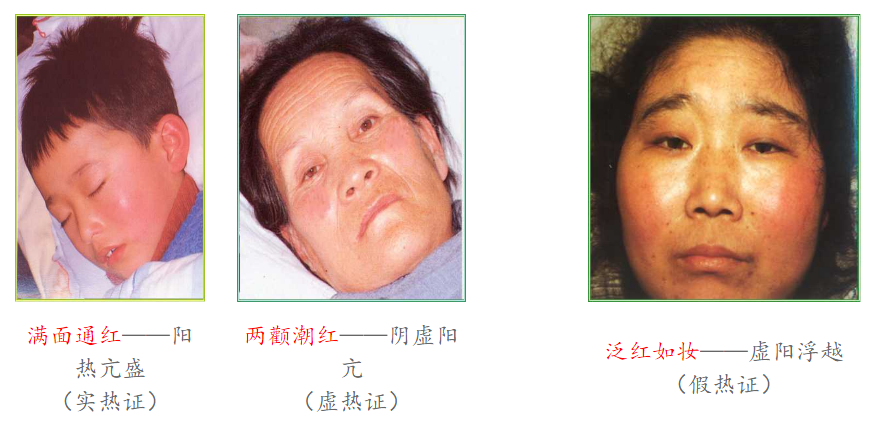
2. White: Indicates deficiency syndromes (Qi, blood, Yang), cold syndromes, and blood loss syndromes.
Bright white indicates Yang deficiency with water flooding (bright white indicates Yang deficiency); pale white without luster indicates blood deficiency/blood loss;
A pale complexion indicates Yang Qi collapse/Yin cold excess.
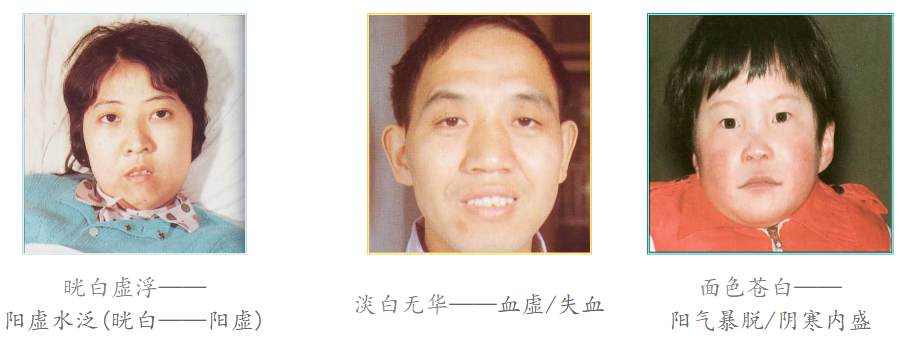
3. Yellow: Indicates spleen deficiency and dampness syndromes.
Yellow indicates spleen deficiency and dampness syndromes. A yellow complexion all over indicates jaundice. A bright yellow complexion like orange peel indicates Yang jaundice, which is caused by damp-heat; a dull yellow complexion like smoke indicates Yin jaundice, which is caused by cold-damp.
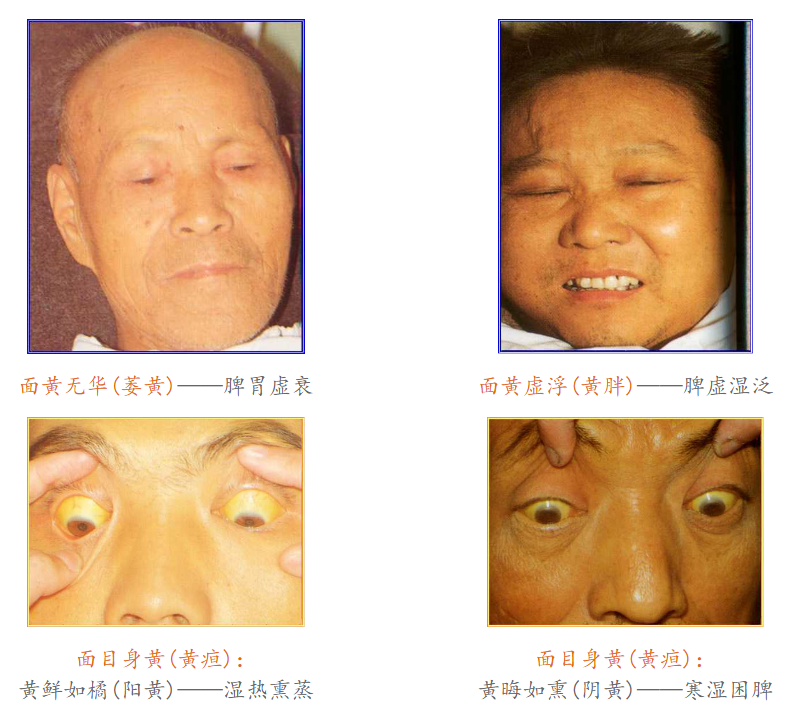
4. Blue: Indicates cold syndromes, Qi stagnation, blood stasis, pain, and convulsions.
Blue indicates cold syndromes, pain, Qi stagnation, blood stasis, convulsions, and liver-gallbladder diseases. In children, a blue appearance between the eyebrows, on the nose, and around the lips often indicates convulsions, which can be seen in children with high fever and seizures. A dark blue-black complexion with lethargy suggests prolonged illness damaging the Zheng Qi, with blood stasis obstructing internally.
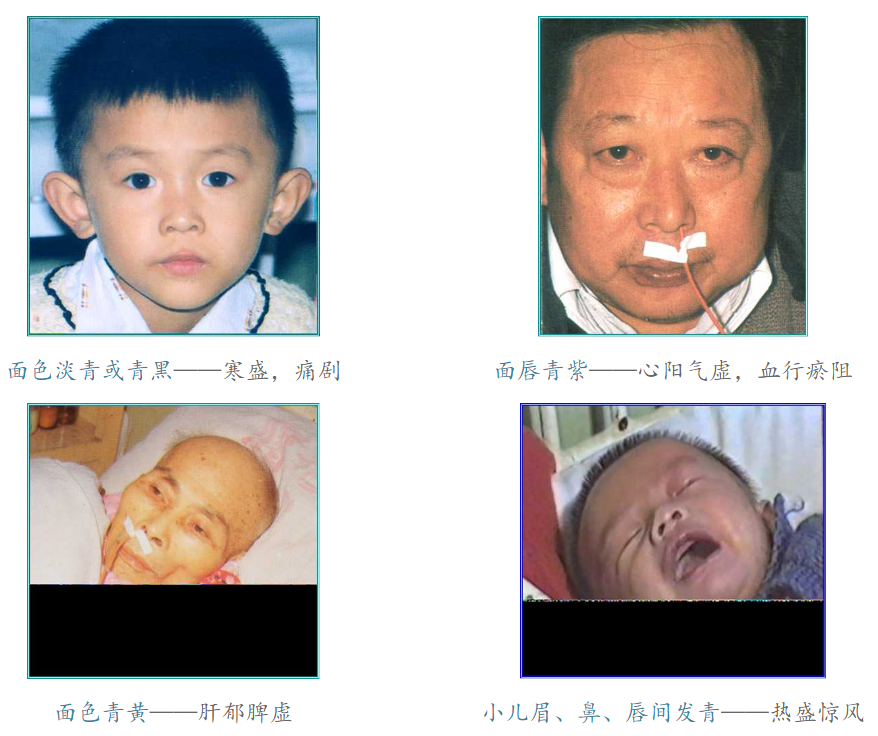
5. Black: Indicates kidney deficiency, cold syndromes, water retention, blood stasis, and severe pain.
Black indicates kidney deficiency, cold syndromes, water retention, blood stasis, and severe pain. A dark complexion indicates extreme internal Yin cold, with true Yang declining, which is a critical sign. Dark circles under the eyes are often caused by kidney deficiency. Symptoms such as menstrual irregularities in women, leukorrhea, and nocturnal emissions in men can often be observed. Excessive fatigue and lack of sleep can also lead to this condition.
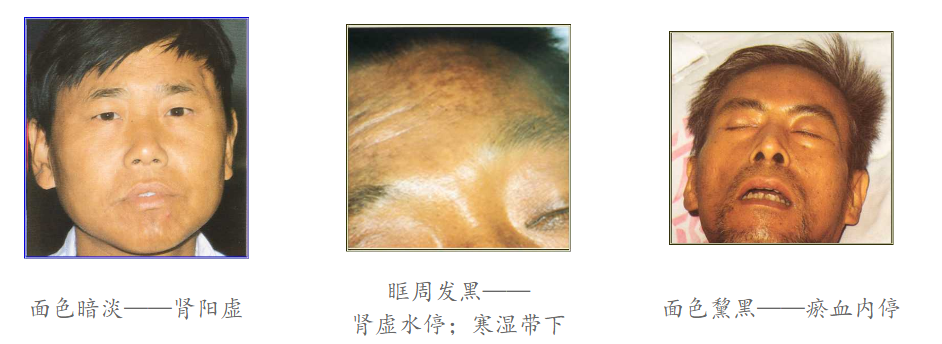
Ten Methods of Observing Color
Floating: A floating complexion indicates an exterior syndrome — Sinking: A sinking complexion indicates an interior syndrome.
Clear: A clear complexion indicates a Yang syndrome — Turbid: A turbid complexion indicates a Yin syndrome.
Deep: A deep complexion indicates an excess syndrome — Light: A light complexion indicates a deficiency syndrome.
Scattered: A scattered complexion indicates a new illness — Stagnant: A stagnant complexion indicates a chronic illness.
Moist: A moist complexion indicates a mild illness — Withered: A withered complexion indicates a severe illness.
Precautions
1. Understand the common and variable, and make comprehensive judgments.
2. Focus on the whole, with emphasis on flourishing and withering.
3. Distinguish between false appearances and eliminate interference.
4. Use various diagnostic methods in conjunction with observation.

